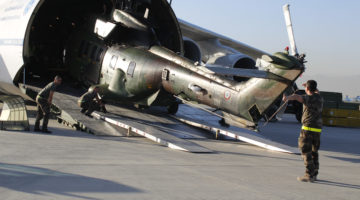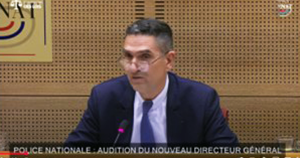By Hans Tino Hansen, CEO of Risk Intelligence1 – A view from the Nordic side of the current Ukraine crisis and its implications
How the current Ukraine crisis fits into the evolving history of European direct defense
With the preoccupation with the Iraq and Afghanistan wars, the West has in a certain sense had its head in the sand and developed a geopolitical blindness with regard to European geopolitics. Putin has not. And he has been working his approach to determine who in the West is willing to do what in meeting his ongoing demands.
He proposed several demands which he knew – as a self-fulfilling prophecy – the West could not accept. But what is observing is that the European states along with the United States and Canada are laying out their real red lines. The Western written response to his demands stated very clearly in paragraph 12 of the reply that NATO would act to defend any NATO member. This means from Putin’s perspective, that NATO states would not directly defend Ukraine.
An apparent geopolitical disconnect Between the West and the East
The two sides are using different playbooks than the well-known strategic game, Risk. For Putin, a key objective is to reinforce his position that the West is the aggressor and will not meet his “legitimate” demands about creating a buffer zone between the West and Russia.
For Putin, this is a fight about long-term survival of the current Kremlin leadership, which makes it all the more dangerous. To him, it is legitimate to use virtually all means to achieve his objectives. For Western publics and leaders, this appears so old fashioned and antiquated, but not to a number of former Warsaw Pact states who see the Russian threat as very real indeed.
For states who take the defense threat seriously, and certainly Nordic states increasingly do so, there is a recognition that some of the lessons learned in the Cold War need to be applied again but in the new context. It is not so much history repeating itself but the need to remember and relearn what is relevant from that history and applying to a new technological and cultural context. But it most certainly is about geopolitical conflict.
We have cleaned the chalk board of the realities we faced militarily in the Cold War. There was nothing left of the knowledge and experience from the Cold War, and nothing left about geopolitical analysis and understanding of geopolitical threat. After the 30 years of the collapse of the Soviet Union and the military sent to distant realms. The direct defense of Europe in a modern geopolitical context has simply disappeared as a core subject of analysis and focus of attention for the general public and its politicians.
The response within Europe going forward
The closer you are geographically to Russia the more focused you are on a direct threat, so for Finland, Poland, Estonia, Latvia and Lithuania or for Norway the Russian challenge is not ever far from sight. For a state like Germany, energy, inflation or climate change is more pressing than a Russian take-over of Belarus for example.
For us it cannot be. The Russian de facto swallowing of Belarus connected to their ramped-up presence in Kaliningrad poses a direct threat to the Nordics, the Balts and the Poles. Kaliningrad, while on one side a military stronghold, it also puts Russia into a more vulnerable position than many realized, and one response to this crisis could well be significantly enhanced cooperation among those states who take the threat seriously.
But with regard to Germany, with what I call the “Schröder-Merkel trap” their leaders have tied Germany tightly into the Russian spider’s web and significantly reduced their freedom of maneuver in political, energy and military terms. (…)
1 This is an abstract of an interview realized by Robbin Laird and previously published by the US website SLDinfo.com.
Illustration © Chernetskaya | Dreamstime.com












